The Korean War Exhibition Hall (6.25 전쟁체험전시관)
.0M 2021-04-17
481, Geumgangsan-ro, Goseong-gun, Gangwon-do
+82-33-682-0088
The Korean War Experience Hall, located next to the Unification Observatory, offers lessons learned through the tragedy of civil war and provides hopes for a peaceful reunification and harmony in the homeland. Visitors can get a deeper understanding of the Korean War and the hardships it led to through videos, materials, and relics on display in this hall.
Goseong Unification Observatory (고성 통일전망타워)
78.1M 2025-03-26
481 Geumgangsan-ro, Hyeonnae-myeon, Goseong-gun, Gangwon-do
+82-33-682-0088
The Goseong Unification Observatory stands as the northernmost observatory in South Korea. It provides panoramic views of the DMZ, the East Sea, and North Korea's Geumgangsan Mountain. Established as a symbol of hope for the reunification of the Korean Peninsula, it features an exhibition hall dedicated to educating visitors about the Korean War (1950-1953). Due to its location near the DMZ, visitors must bring an ID, such as a passport or foreigner resident card, for entry.
DMZ Peace Trail (Goseong A/B Course) (DMZ 평화의 길(고성 A/B코스))
78.1M 2024-03-18
481 Geumgangsan-ro, Hyeonnae-myeon, Goseong-gun, Gangwon-do
The DMZ Peace Trail is a trekking path created with the hope of fostering peace in the Korean DMZ (Demilitarized Zone). This trail offers views of the renowned Geumgangsan Mountain and the Haegeumgang Islets. To access the trail, visitors must first register their visit at the Goseong Visitor Registration Center, confirm their identity, and then acquire a visitor pass at the Jejin Checkpoint. After these steps, visitors can proceed to the Unification Observatory, which is the starting point of the trail.
[Course A] Unification Observatory → Geumgang Access Gate → Geumgangsan Observatory → Unification Observatory (2.7km on foot + 5.2km by car)
[Course B] Unification Observatory → Anho Checkpoint → Geumgangsan Observatory → Unification Observatory (7.2km by car)
Unification Security Park (통일안보공원)
123.1M 2025-01-13
481 Geumgangsan-ro, Hyeonnae-myeon, Goseong-gun, Gangwon-do
Unification Security Park serves as the entry point to the Unification Observatory. Before entering the observatory, visitors can watch a video at the Education Security Hall, which has a seating capacity of 700 people. In front of the Education Security Hall, stands the Peace Bell, a symbol of hope for peaceful reunification. Additionally there is a monument commemorating the army unit members who sacrificed their lives to stop the invasion of North Korean guerillas just before the Korean War.
◎ Due to its location within the Civilian Control Line area, visitors must complete the required procedures before entering.
Daejinhang Port (대진항)
1.8Km 2025-01-13
Daejinhang-gil, Hyeonnae-myeon, Goseong-gun, Gangwon-do
Daejinhang Port is located at the northernmost tip of the east coast of Korea. Since the opening of North-Eastern Railways in 1935, the port has become a transportation hub, facilitating the transport of seafood and agricultural products to Wonsan.
Hwajinpo Lake (화진포)
3.4Km 2024-12-10
Hwajinpo Lake is one of the most famous lagoons in Korea. It is connected to the East Sea and blessed with natural light, with dense pine forests spreading like folding screens around the vast lake, which covers an area of 238ha. The beach is shallow, clear, and has a great view of the Geumgudo Island, making it popular among tourists. In winter, the area also serves as a refuge for migratory birds, including Natural Monuments like swans. Indeed, the view of the swans dancing over the lake brings to mind Tchaikovsky’s masterpiece. The reason why migratory birds head to Hwajinpo Lake is because of its clean water and the abundant food within its reed beds. The surrounding areas are home to the Castle of Hwajinpo (Villa of Kim Il-sung), Villa of Syngman Rhee, and Hwajinpo Maritime Museum, home to nearly 40,000 exhibits of 1,500 rare shellfish, coral, fish species and fossils, along with historic sites like dolmens. The area is a vital habitat to many aquatic creatures like carp, grey mullet, leather carp, and snakehead.
Hwajinpo Beach (화진포해수욕장)
4.0Km 2024-12-10
Opened in 1973, Hwajinpo Beach is a stretch of white sand made of monazite, a fine sand made of crushed shells and rocks over tens of thousands of years. Monazite sand makes a distinct sound when stepped on and repels ants. The beach is 1.7 kilometer long, about 70 meters wide, and 1.5 meters in average depth. The beach attracts many tourists with its fine white sand, clear waters, and shallow depths. Its view is characterized by scenic landscape of handsome rock formations and lush pine forests surrounding the massive Hwajinpo Lake. The area is home to the Villa of Kim Il-sung, the Villa of Syngman Rhee, the Villa of Lee Ki-poong, and Hwajinpo Maritime Museum. The scenic view of the bamboo forest on Geumgudo Island and the seagulls flying over the water will leave visitors in awe.
Hwajinpo Beach [National Geopark] (화진포 (강원평화지역 국가지질공원))
4.4Km 2021-06-23
Hyeonnae-myeon, Goseong-gun, Gangwon-do
+82-33-249-3881
Hwajinpo Lake is the largest lagoon in Korea, created by a section of the ocean being closed off when two opposing sand spits merged. This unique formation and the ecosystem that came to live on the sand bar are highly valued. The water in the lagoon was a mix of fresh and salt water, creating a special environment for aquatic animals of both types to live together. The lake is in the shape of a figure eight, with the southern lake being larger than the northern lake, although the northern lake is still connected with the ocean through a small stream.
Villa of Lee Ki-poong (이기붕별장)
4.9Km 2022-09-08
300-1, Hwajinpo-gil, Goseong-gun, Gangwon-do
+82-33-680-3677
The villa of Lee Ki-poong is located between the villas of Rhee Syngman and Kim Ilsung on the shores of Hwajinpo Lake. The villa was originally built by foreign missionaries in the 1920s. It was used as vacation villa by the Northern communist party's executives before the Korean War broke out, and was turned into a private residence by Lee, the Vice-president to President Rhee, and his wife Maria Park after the cease-fire agreement.
Villa of Rhee Syngman (이승만별장(고성))
5.1Km 2025-01-15
33, Iseungmanbyeoljang-gil, Goseong-gun, Gangwon-do
+82-33-682-0500
During the 1950's, three leaders, namely Kim Ilsung, Rhee Syngman and Lee Ki-poong had summer houses built around the lake of Hwajinpo. The villa of Rhee Syngman, Korea's first president, was built in 1954 but fell into a state of disuse by 1961. It was not repaired until July of 1997 by the army, and was fully restored in 1999, opening as an exhibition hall.
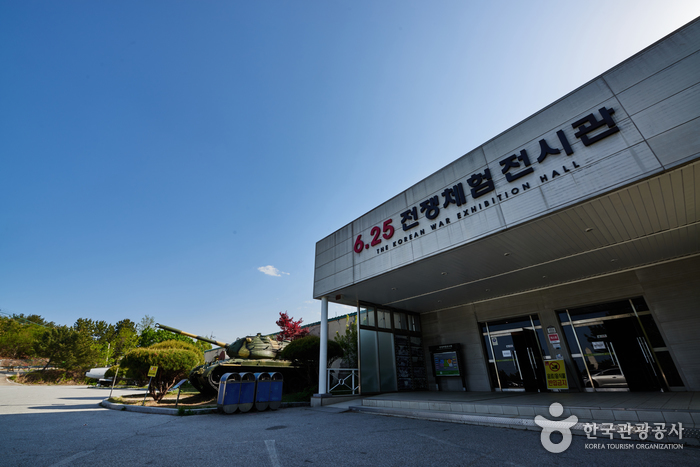
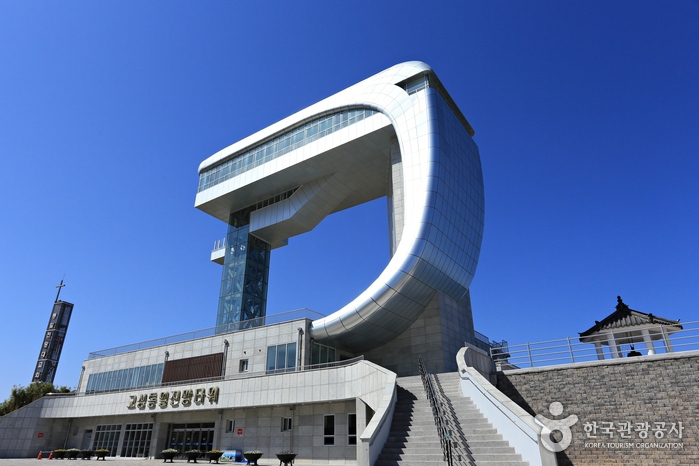
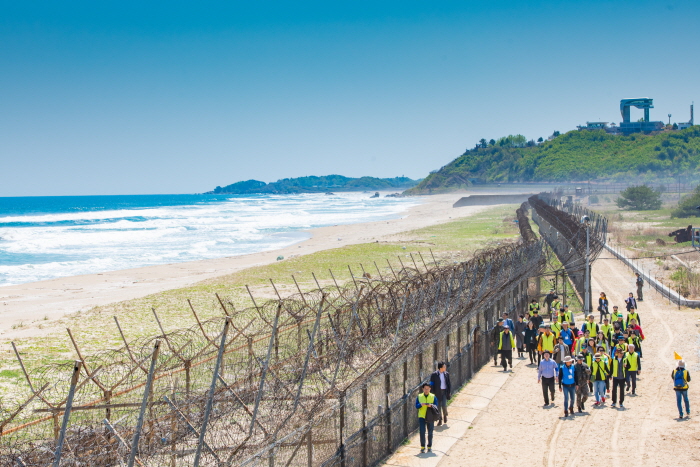
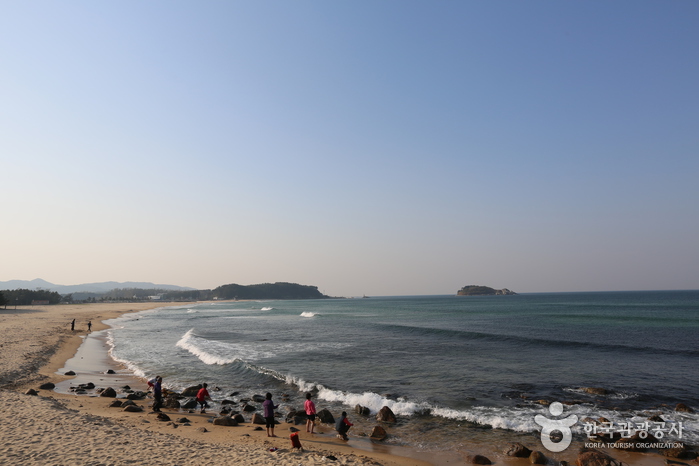
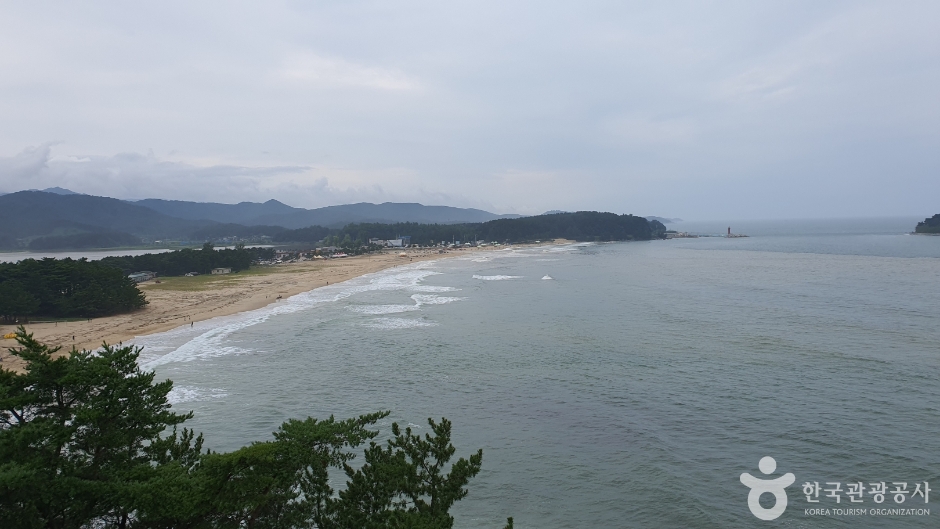
![Hwajinpo Beach [National Geopark] (화진포 (강원평화지역 국가지질공원))](http://tong.visitkorea.or.kr/cms/resource/87/217287_image2_1.jpg)
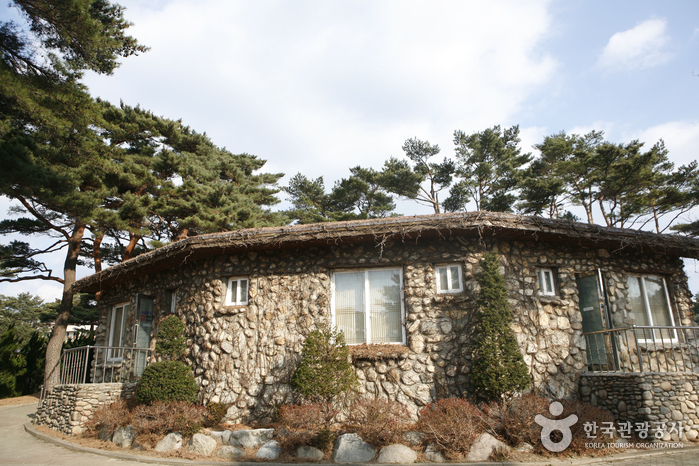
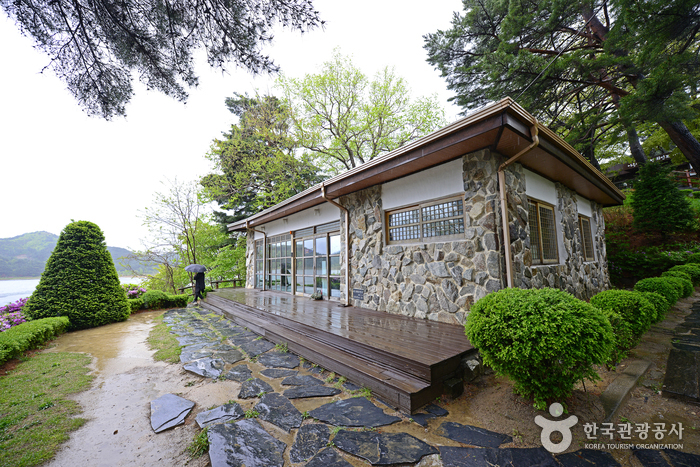
 English
English
 한국어
한국어 日本語
日本語 中文(简体)
中文(简体) Deutsch
Deutsch Français
Français Español
Español Русский
Русский